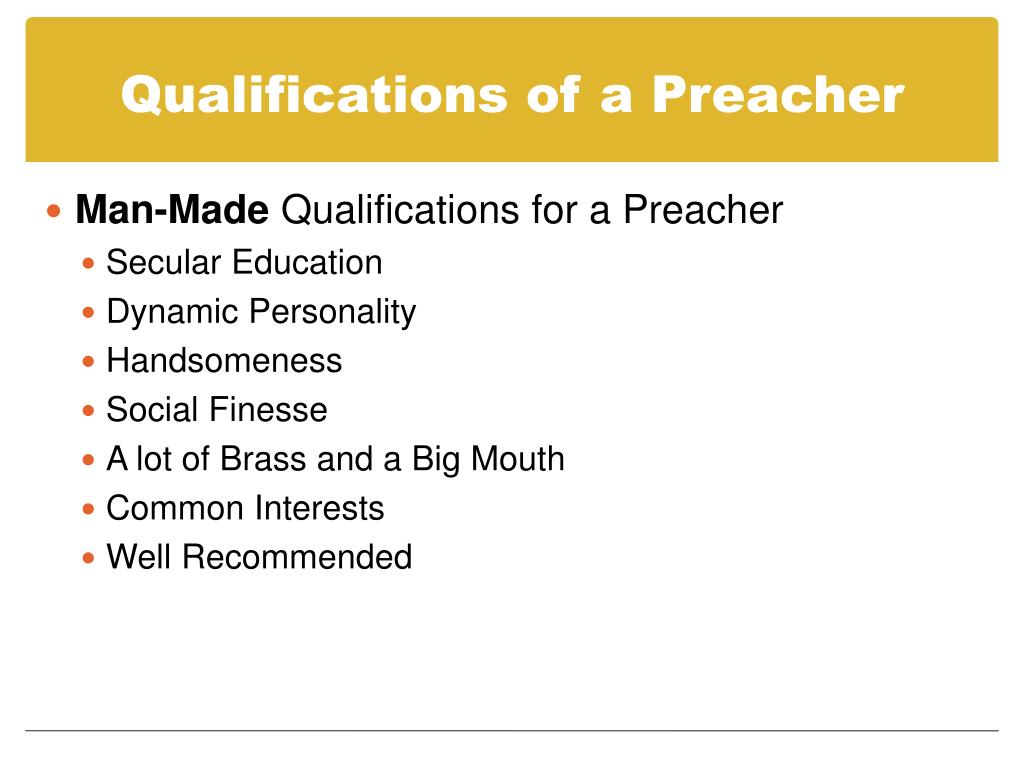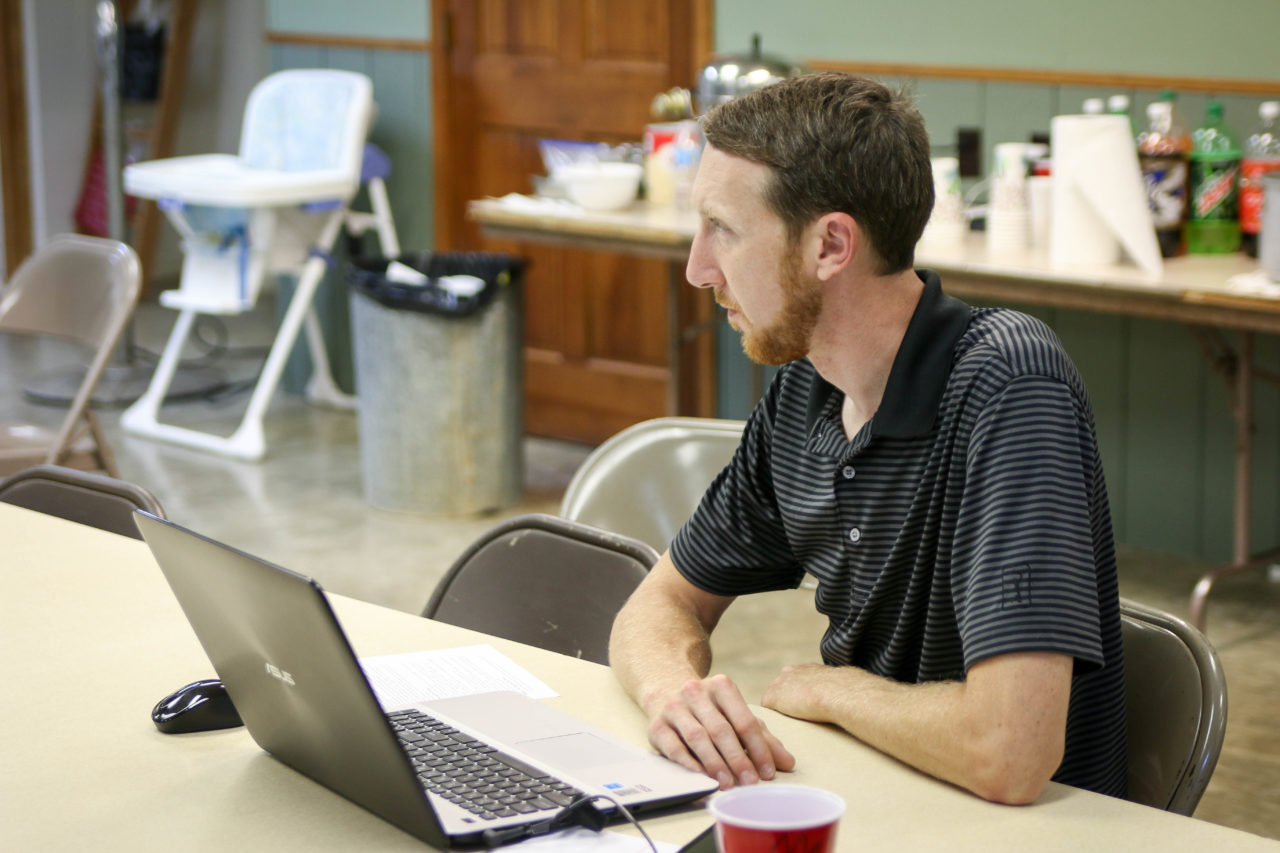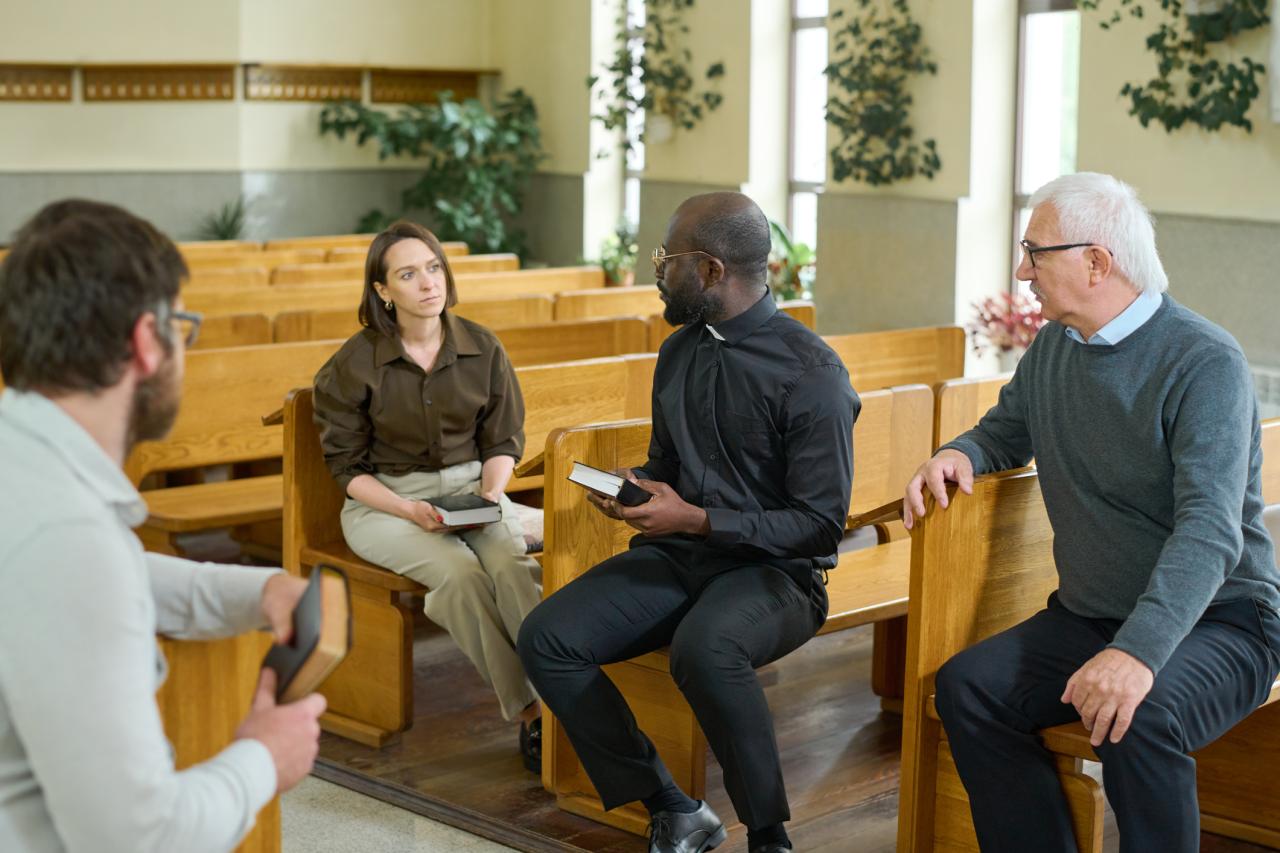Understanding the Role of a Preacher

A preacher is a vital figure in many religious communities, acting as a spiritual guide, communicator of faith, and motivator of moral conduct. Their role transcends simply delivering sermons; it encompasses a wide range of responsibilities and interactions. Preachers are often at the forefront of their congregations, leading worship, providing pastoral care, and fostering a sense of community.
Defining the Preacher
A preacher is a person who delivers religious messages, often from a scriptural basis. They are more than just speakers; they are often leaders, teachers, counselors, and encouragers within their faith community. Their roles vary significantly based on the specific denomination and context, but common threads include interpreting scripture, inspiring faith, and guiding individuals towards spiritual growth. Preachers play a pivotal role in shaping the spiritual and moral landscape of their communities.
Types of Preachers
Different types of preachers focus on various aspects of religious practice. Pastoral preachers, for instance, are often deeply involved in the pastoral care of their congregation, providing guidance and support to individuals facing personal challenges. Evangelistic preachers emphasize spreading the Gospel and converting others to their faith. Prophetic preachers, on the other hand, focus on delivering messages of truth and judgment, often calling for social justice or spiritual renewal.
Key Skills and Qualities
Effective preachers possess a combination of skills and qualities. Strong communication skills, including articulation, clarity, and engaging delivery, are essential. A deep understanding of scripture and theological principles is fundamental. Compassion, empathy, and the ability to connect with individuals on a personal level are also crucial for a preacher who seeks to inspire and guide. A preacher must also be able to adapt their message to different audiences and contexts.
Historical Context and Evolution
The role of the preacher has evolved significantly throughout history. Early preachers were often itinerant figures, sharing the word of God in various communities. As Christianity developed, preachers became more integral to established churches, leading worship services and shaping religious doctrine. Modern preachers continue this tradition, adapting to the evolving needs and expectations of their congregations.
Comparing Preaching Styles
| Preaching Style | Focus | Method | Example |
|---|---|---|---|
| Expository | Detailed analysis of a specific biblical passage. | Thorough explanation and application of the text. | Breaking down a passage verse by verse, examining its historical and literary context, and exploring its relevance to modern life. |
| Topical | Addressing a particular theme or issue from the Bible. | Synthesizing various passages to present a unified message. | Focusing on the theme of forgiveness, using examples from various biblical stories to illustrate its importance. |
| Narrative | Using biblical stories and narratives as a foundation for the message. | Connecting with the audience through relatable stories and emphasizing moral lessons. | Presenting the parable of the Prodigal Son, highlighting the theme of reconciliation and God’s unwavering love. |
Developing Preaching Skills

Mastering the art of preaching involves more than simply delivering a message; it requires a deep understanding of the subject matter, a structured approach to sermon preparation, and the ability to connect with the audience. A strong foundation in biblical knowledge and theological concepts is crucial for crafting impactful and relevant sermons. Effective communication techniques and engaging delivery methods further enhance the preacher’s ability to resonate with listeners and inspire them to action.
Importance of Biblical and Theological Study
A thorough understanding of the Bible and relevant theological concepts is paramount to crafting meaningful and impactful sermons. Preachers must possess a deep knowledge of scripture, not just as a collection of stories, but as a unified narrative revealing God’s plan for humanity. This includes familiarity with various biblical genres, historical contexts, and literary devices used in the text. Furthermore, understanding theological concepts provides a framework for interpreting scripture and applying its message to contemporary issues. This allows for a more nuanced and relevant application of God’s word to the lives of listeners.
Sermon Preparation Process
Preparing a sermon is a meticulous process that involves several key stages. Outlining provides a roadmap for the message, ensuring a logical flow and coherent presentation. Thorough research is essential for supporting claims and enriching the message with relevant examples and insights. Crafting the actual sermon involves carefully selecting words, phrases, and illustrative anecdotes that convey the message effectively. This requires a careful balance between maintaining clarity and engaging the audience’s attention.
Engaging the Audience
Effective communication is crucial for connecting with the audience. Preachers should consider their audience’s background, beliefs, and concerns to tailor their message to resonate with them. Using relatable examples and illustrations helps to make the message more understandable and impactful. Maintaining eye contact and varying tone and pace of delivery keeps the audience engaged and focused on the message. Employing appropriate body language and posture reinforces the message’s emotional impact.
Techniques for Passionate and Clear Delivery
Passion and clarity are essential elements of effective preaching. Preachers should speak with conviction, allowing their passion for the message to inspire their audience. Using clear and concise language, avoiding jargon, and structuring sentences thoughtfully ensures the message is easily understood. Varying the tone of voice, pace, and volume adds dynamism to the delivery, preventing monotony. Pausing strategically allows the message to sink in and creates a sense of anticipation.
Crafting Compelling Introductions
A compelling introduction is vital for grabbing the audience’s attention and setting the stage for the sermon. The introduction should immediately engage the audience by posing a thought-provoking question, sharing a relevant anecdote, or making a surprising statement. The introduction should also clearly state the sermon’s main point and provide a brief overview of the message to be presented. This creates anticipation and sets the stage for the remainder of the sermon. A strong opening hook is crucial for ensuring that listeners remain captivated from the beginning.
Components of a Well-Structured Sermon
| Component | Description |
|---|---|
| Introduction | Grabs attention, states the main point, and previews the sermon’s content. |
| Body | Presents the main points and supporting arguments, using scripture, examples, and illustrations to support the thesis. |
| Application | Connects the message to the audience’s lives, offering practical implications and actionable steps. |
| Conclusion | Summarizes the key points, reinforces the main message, and inspires action. |
Theological Foundations

Preaching is not merely the delivery of a message; it’s a profound act rooted in theological understanding. A strong theological foundation informs the preacher’s perspective, shaping their interpretation of scripture and its application to contemporary life. This foundation is crucial for delivering a message that is both relevant and deeply grounded in faith.
Theological understanding underpins the preacher’s ability to interpret scripture accurately and apply its principles effectively. Without a strong grasp of theological concepts, the message risks being superficial or even misleading. A sound theological perspective ensures the message aligns with core beliefs and traditions, allowing the preacher to communicate the message with conviction and clarity.
Biblical Interpretation
A preacher’s ability to interpret the Bible accurately is paramount. The Bible, with its diverse genres and historical contexts, requires careful analysis. This involves considering the literary form of the text, the historical setting, and the intended audience. Preachers must be diligent in understanding the nuances of the language and avoid imposing modern interpretations on ancient texts.
Theological Traditions in Preaching
Different theological traditions offer distinct perspectives on the Bible and its application. Protestant, Catholic, and Eastern Orthodox traditions, for example, have varying approaches to scripture and theological concepts. Understanding these differences allows a preacher to engage with diverse audiences with sensitivity and respect. This understanding also facilitates a richer and more nuanced approach to the message.
Examples of Theological Integration
The integration of theological concepts into sermons is crucial for conveying a message that resonates with the audience. For example, a sermon on forgiveness might draw upon the concept of grace from the theological tradition, linking it to a specific biblical story. Another example might illustrate the concept of divine providence through the life of a historical figure, demonstrating how God’s plan unfolds in seemingly mundane events.
Key Figures in Preaching
Numerous figures have significantly influenced the art of preaching throughout history. Martin Luther, John Calvin, and Jonathan Edwards, for example, have left an indelible mark on Protestant preaching. Their approaches, emphasizing clarity, passion, and deep engagement with scripture, continue to inspire preachers today. Their works and sermons provide valuable insights into the application of theological principles.
Table: Approaches to Biblical Interpretation
| Approach | Description | Example |
|---|---|---|
| Literal/Grammatical | Focuses on the plain meaning of the text, taking into account the historical and literary context. | Interpreting a passage on creation literally, understanding the scientific and historical context. |
| Historical-Critical | Examines the text’s historical context, literary form, and social setting to understand its meaning within its time. | Analyzing a parable’s cultural relevance to understand its message to the original audience. |
| Theological | Connects the biblical text to broader theological themes and concepts. | Connecting a passage on love to the concept of agape in Christian theology. |
Practical Considerations for Preaching

Effective preaching transcends theological knowledge and eloquent delivery; it necessitates a deep understanding of the practical aspects that support and enhance the message. These considerations encompass the preacher’s spiritual state, audience engagement, ethical conduct, and response to feedback, all of which contribute to the overall impact and effectiveness of the sermon.
Prayer and Spiritual Preparation
Spiritual preparation is foundational to effective preaching. A preacher who approaches the pulpit without adequate prayer and reflection risks delivering a message that lacks the necessary spiritual power and authenticity. Regular prayer fosters a deeper connection with the divine, allowing the preacher to receive guidance and inspiration. This process also helps cultivate a profound understanding of the message, leading to a more impactful and resonant delivery. This, in turn, allows the preacher to connect with the audience on a deeper level, fostering spiritual growth and understanding.
Understanding and Connecting with the Audience
Preachers must actively engage with their audience to ensure the message resonates effectively. This involves understanding the cultural, social, and spiritual context of the congregation. By tailoring the message to the specific needs and interests of the audience, preachers can effectively communicate the core values and teachings of their faith. This effort requires careful consideration of the diverse backgrounds and experiences represented within the congregation.
Ethical Conduct and Integrity
Maintaining ethical conduct and integrity is paramount in preaching. Preachers are often viewed as moral exemplars, and their actions directly influence the congregation’s perception of the message and their own spiritual journeys. Consistency between the message and the preacher’s actions builds trust and fosters a stronger connection with the audience.
Handling Difficult Questions and Criticisms, How to become a preacher
Preachers will inevitably encounter challenging questions and criticisms regarding their sermons or teachings. A proactive approach to addressing these concerns constructively is essential. Instead of avoiding such interactions, preachers should embrace them as opportunities for deeper engagement and clarification. This approach fosters a more robust and supportive community. Actively listening and responding thoughtfully demonstrates a commitment to intellectual honesty and mutual understanding.
Community Leadership and Pastoral Care
The preacher’s role extends beyond the pulpit. Preachers often serve as community leaders, offering guidance and support to their congregants. This involves actively participating in the community and demonstrating compassion and care for the well-being of those under their spiritual charge. A preacher’s involvement in pastoral care demonstrates a genuine concern for the individual needs of their flock, fostering a sense of belonging and support.
Strategies for Connecting with Diverse Audiences
| Audience Characteristic | Strategies for Connection |
|---|---|
| Cultural Differences | Understanding diverse cultural norms and values. Employing inclusive language and examples relatable to various backgrounds. Incorporating diverse perspectives in sermon content. |
| Age Groups | Adjusting language and examples to resonate with different age groups. Using contemporary examples and references familiar to younger generations while maintaining the core message’s integrity. |
| Socioeconomic Backgrounds | Addressing issues and concerns relevant to different socioeconomic strata. Using relatable stories and illustrations to connect with diverse financial situations. |
| Educational Levels | Employing clear and concise language, avoiding jargon, and providing adequate explanations for complex theological concepts. Utilizing visual aids and examples for better comprehension. |
| Spiritual Maturity | Balancing the needs of those seeking spiritual growth with those who have deeper spiritual understanding. Providing opportunities for in-depth exploration of theological concepts for those who are more spiritually mature. |
Preparing for Ministry

Embarking on a career as a preacher requires careful preparation, encompassing academic pursuits, spiritual development, and a deep understanding of one’s calling. This phase is crucial for fostering the necessary skills and knowledge to effectively serve the community and inspire faith. A well-rounded approach, blending theological learning with personal growth, is essential for a fulfilling and impactful ministry.
A comprehensive approach to preparation involves several key areas, including education and training, mentorship, discerning one’s calling, and continuous personal development. A commitment to these areas builds a strong foundation for future ministry.
Educational and Training Requirements for Ministry
The educational landscape for aspiring preachers is diverse, reflecting the varied denominations and theological perspectives within the Christian faith. Formal theological education is often seen as a valuable asset, providing structured learning and fostering critical thinking skills essential for effective ministry.
- Seminaries and theological colleges are institutions specifically designed to equip individuals with the theological, practical, and pastoral skills necessary for ministry. They offer courses in biblical studies, systematic theology, church history, homiletics, and pastoral care. These programs often provide a rigorous curriculum and faculty expertise.
- Undergraduate degrees in related fields like religious studies, philosophy, or communication can provide a valuable foundation for theological studies, often offering transferable knowledge and critical thinking skills.
- Continuing education and professional development opportunities are crucial for ongoing growth and adaptation in the ever-evolving field of ministry. These can include workshops, conferences, and specialized courses.
The Importance of Mentorship and Spiritual Guidance
Mentorship plays a pivotal role in navigating the complexities of ministry. A seasoned mentor can offer invaluable guidance, support, and insights, drawing from years of experience in the field. Seeking spiritual direction from a trusted advisor or mentor is crucial for personal and professional growth.
- Experienced ministers can offer practical advice and insights into ministry challenges. Mentors can also provide feedback on sermons, presentations, and other aspects of ministry.
- Mentors provide a framework for personal reflection and spiritual growth, guiding the mentee through critical self-assessment and growth.
- Spiritual direction helps cultivate a deep relationship with God, fostering a strong foundation for ministry. It guides personal discernment and aligns the individual’s aspirations with God’s calling.
Discerning a Calling to Preach
Discerning a calling to preach involves introspection, prayer, and careful consideration of one’s gifts and aspirations. This process is not always straightforward but often involves reflection on personal experiences, spiritual encounters, and the desires of the heart.
- Personal reflection on experiences and spiritual encounters can highlight areas of passion and aptitude for preaching. This can involve journaling, prayer, and seeking feedback from trusted individuals.
- Seeking guidance from mentors and spiritual leaders can provide valuable insights into potential vocations. Prayer and introspection are vital components in this process.
- Consideration of the needs of the community and the potential impact of one’s ministry can illuminate the specific path and opportunities for service.
The Importance of Personal Development and Ongoing Learning
Personal development is a continuous process that underpins effective ministry. It encompasses self-awareness, emotional intelligence, and the ongoing pursuit of knowledge. This commitment to personal growth fosters resilience and adaptability.
- Cultivating self-awareness allows preachers to understand their strengths, weaknesses, and areas for growth. This understanding is essential for effective ministry.
- Developing emotional intelligence helps preachers connect with their congregations on a deeper level, fostering empathy and understanding.
- Maintaining a commitment to ongoing learning keeps preachers abreast of contemporary issues and ensures they can effectively engage with their audience.
Comparison of Theological Education Programs
| Program Type | Focus | Curriculum | Typical Duration |
|---|---|---|---|
| Master of Divinity (MDiv) | General theological studies | Biblical studies, systematic theology, church history, ethics, homiletics | 2-3 years |
| Master of Theology (ThM) | Advanced theological studies | In-depth study of specific theological disciplines, often specializing in areas like biblical languages or systematic theology | 1-2 years |
| Doctor of Philosophy (PhD) in Religious Studies/Theology | Research and scholarship | Extensive research, writing, and dissertation work | 4+ years |
Building a Preaching Ministry

Cultivating a successful preaching ministry involves more than just delivering sermons. It requires a strategic approach to personal branding, congregational relationships, and community engagement. This section explores key strategies for building a thriving ministry that resonates with your audience and contributes meaningfully to the community.
Building a Strong Personal Brand
Establishing a strong personal brand as a preacher fosters recognition and trust within the congregation and the wider community. This involves projecting credibility, authenticity, and a clear understanding of your unique preaching style. Effective communication, consistent presence, and thoughtful engagement on social media, or in community settings, can contribute to this process. A clear understanding of your strengths and areas for growth in preaching will enhance the overall effectiveness of your personal brand.
Cultivating Relationships with Congregants
Building meaningful relationships with congregants is crucial for a successful preaching ministry. Active listening, showing genuine care, and making yourself accessible fosters a sense of connection and belonging. Regular interactions, such as attending community events, hosting open forums, or even simply engaging in conversations during fellowship time, demonstrate a commitment to the well-being of the congregation. This creates a welcoming environment where individuals feel valued and understood.
Establishing a Preaching Schedule and Ministry
Developing a structured preaching schedule and ministry plan provides a framework for consistency and growth. This includes outlining sermon themes, incorporating relevant scripture, and considering the congregation’s needs and preferences. Regularly evaluating the effectiveness of your preaching style and adjusting your approach based on feedback from congregants and peers contributes to a dynamic and impactful ministry. Consider creating a yearly or quarterly calendar to plan and schedule themes.
Promoting Unity and Inclusivity in a Congregation
Promoting unity and inclusivity is essential for fostering a welcoming and supportive congregation. This involves actively seeking to understand diverse perspectives, celebrating differences, and ensuring all members feel valued and respected. A diverse and inclusive environment enriches the spiritual life of the congregation, creating an atmosphere of understanding and acceptance. This often involves intentional programming, seeking feedback from various groups, and addressing any instances of exclusion or prejudice.
Incorporating Community Outreach into Preaching Ministry
Community outreach provides opportunities for preaching to extend beyond the walls of the church. Incorporating social justice initiatives, volunteering in community service projects, or offering sermons in other community settings broadens the impact of your ministry and promotes a sense of responsibility to the wider community. Sharing relevant stories and examples from the community during sermons can enhance the relevance and impact of your message, strengthening ties with the broader community.
Summary of Steps for Establishing a Preaching Ministry
| Step | Description |
|---|---|
| 1. Define Personal Brand | Articulate unique preaching style, develop a clear message, and cultivate consistent presence. |
| 2. Cultivate Relationships | Actively listen, show care, and make yourself accessible to foster connections. |
| 3. Establish Schedule | Artikel sermon themes, incorporate scripture, and consider congregational needs and preferences. |
| 4. Promote Inclusivity | Actively understand diverse perspectives, celebrate differences, and ensure all members feel valued. |
| 5. Incorporate Outreach | Extend ministry beyond the church by engaging in social justice initiatives, volunteering, or preaching in other settings. |
Preaching for Different Audiences

Effective preaching transcends a single style; it requires adaptability to resonate with diverse audiences. Understanding the nuances of different age groups, cultural backgrounds, and congregational needs is crucial for impactful ministry. This necessitates tailoring the message, delivery, and overall approach to connect with listeners on a personal level.
Preaching for various audiences is a multifaceted task demanding careful consideration of multiple factors. It involves recognizing the distinct perspectives and expectations of each group, while also maintaining the core message’s integrity. The goal is not to compromise the theological foundation, but to present the message in a manner that is accessible and relevant to the listener. This requires an understanding of communication styles, cultural contexts, and the specific challenges and opportunities each audience presents.
Adapting Preaching Styles for Various Age Groups
Different age groups have varying levels of understanding, experiences, and engagement styles. Children, adolescents, young adults, middle-aged adults, and seniors each require a unique approach. A sermon that resonates with teenagers might not connect with a group of elderly congregants.
- For children, sermons should be simple, engaging, and visually stimulating. Stories, illustrations, and interactive elements are particularly effective. Consider using age-appropriate language, humor, and relevant examples from their lives. For example, a sermon about forgiveness might be illustrated using a story about a child who makes a mistake.
- Adolescents and young adults may be more receptive to sermons that address their current concerns, aspirations, and challenges. Using relatable examples, real-world scenarios, and open-ended discussions can foster engagement. For instance, a sermon on faith and doubt might discuss how young people grapple with life’s uncertainties and find answers in faith.
- Middle-aged and older adults often appreciate sermons that offer practical application and encouragement. They may be drawn to sermons with a focus on life lessons, wisdom, and personal reflections. Sharing stories of perseverance and overcoming obstacles can be particularly impactful for this group.
Connecting with Diverse Cultural Backgrounds
A diverse congregation brings a wealth of experiences, perspectives, and cultural nuances. A preacher must be mindful of these differences to ensure inclusivity and respect.
- Understanding and acknowledging the cultural context of each individual within the congregation is key. Recognizing and respecting cultural differences, like language, traditions, and values, will foster a welcoming and inclusive environment. Consider utilizing interpreters, incorporating cultural references in a respectful way, and incorporating culturally relevant stories.
- Employing inclusive language and avoiding stereotypes are essential for connecting with various cultural backgrounds. A preacher should avoid language that could be perceived as offensive or insensitive to any particular group.
Addressing Specific Needs and Concerns of a Congregation
Preachers must be attentive to the unique needs and concerns of their congregation. This includes addressing social issues, personal struggles, and spiritual growth opportunities within the community.
- Identifying and understanding the specific challenges faced by the congregation is vital. Researching the community’s needs and proactively addressing these issues can foster a sense of connection and belonging.
- Creating a space for open dialogue and active listening is crucial. This involves actively listening to the congregation’s concerns and addressing them with empathy and understanding.
Making Preaching Relevant and Engaging for Contemporary Audiences
Staying relevant and engaging in the modern world is paramount for a preacher. Utilizing contemporary examples, relatable stories, and interactive elements can enhance engagement and comprehension.
- Drawing upon contemporary examples from popular culture, news events, and everyday life can help listeners relate to the message more easily.
- Incorporating visual aids, multimedia presentations, and interactive elements can capture attention and facilitate understanding. Videos, music, and technology can add depth and engagement to a sermon.
Table Highlighting Different Approaches to Preaching for Various Age Groups
| Age Group | Approach | Emphasis |
|---|---|---|
| Children | Simple, engaging, interactive | Stories, illustrations, relatable examples |
| Adolescents/Young Adults | Relatable, relevant, open discussion | Current concerns, aspirations, challenges |
| Middle-aged Adults | Practical application, encouragement | Life lessons, wisdom, personal reflections |
| Seniors | Meaningful, comforting, supportive | Hope, faith, encouragement, legacy |
FAQ Summary: How To Become A Preacher
How to become a preacher – What are the different types of preaching styles?
Preaching styles vary, including expository (exploring a specific passage), topical (addressing a particular theme), and narrative (using stories to illustrate points). Each style has its own strengths and is suited to different contexts.
What education is typically required to become a preacher?
Formal theological education, such as seminary or Bible college, is common, but experience, mentorship, and personal development are also important factors.
How can I connect with diverse audiences effectively?
Understanding and adapting your message to the specific needs and backgrounds of your audience is key. Researching your community and tailoring your approach can significantly improve your effectiveness.
How do I handle difficult questions or criticisms?
Preparation, respectful listening, and a willingness to engage in thoughtful dialogue are crucial. Addressing concerns constructively can foster a positive environment.